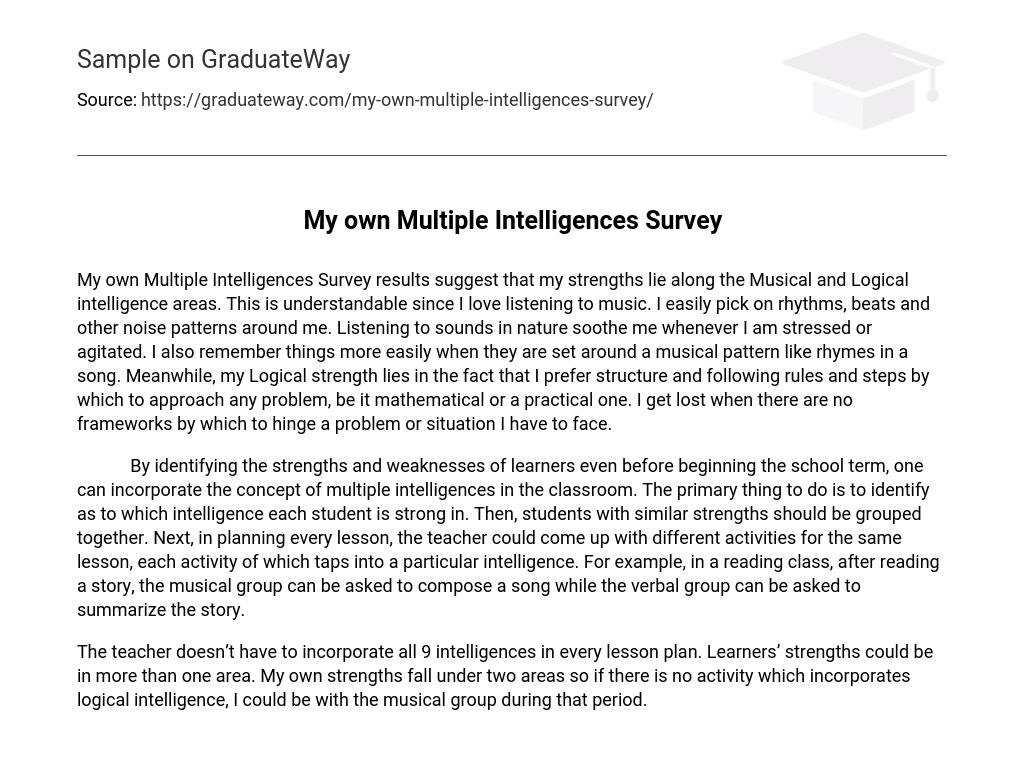My own Multiple Intelligences Survey results suggest that my strengths lie along the Musical and Logical intelligence areas. This is understandable since I love listening to music. I easily pick on rhythms, beats and other noise patterns around me. Listening to sounds in nature soothe me whenever I am stressed or agitated. I also remember things more easily when they are set around a musical pattern like rhymes in a song. Meanwhile, my Logical strength lies in the fact that I prefer structure and following rules and steps by which to approach any problem, be it mathematical or a practical one. I get lost when there are no frameworks by which to hinge a problem or situation I have to face.
By identifying the strengths and weaknesses of learners even before beginning the school term, one can incorporate the concept of multiple intelligences in the classroom. The primary thing to do is to identify as to which intelligence each student is strong in. Then, students with similar strengths should be grouped together. Next, in planning every lesson, the teacher could come up with different activities for the same lesson, each activity of which taps into a particular intelligence. For example, in a reading class, after reading a story, the musical group can be asked to compose a song while the verbal group can be asked to summarize the story.
The teacher doesn’t have to incorporate all 9 intelligences in every lesson plan. Learners’ strengths could be in more than one area. My own strengths fall under two areas so if there is no activity which incorporates logical intelligence, I could be with the musical group during that period.





